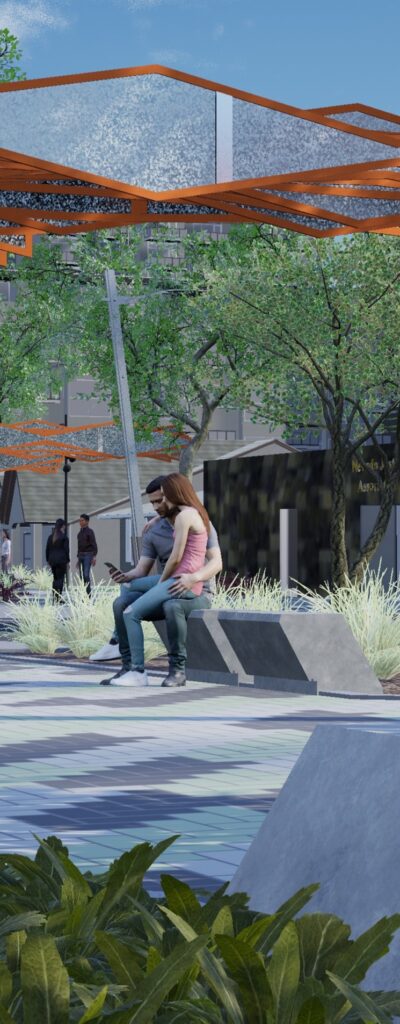When I started Beyond CAD Inc. in 2020, I was moving forward with momentum from my recent sale of my previous company, Civil FX. My objective was to innovate and deliver a product that would transform the landscape of 3D visualization in the field of transportation and infrastructure – Beyond CAD. This was not merely a product, but a representation of my commitment to revolutionize infrastructure project communication, akin to how Lumion and TwinMotion have transformed architecture communication with real-time 3D visualization. Built on Unreal Engine and created by talented programmers and artists (some brought over from Civil FX), Beyond CAD was the tool I wish existed while I was offering 3D visualization services for clients from 2014 to 2020 with Civil FX.
The early access launch of Beyond CAD in late 2021 was met with enthusiasm from the handful of early users, clearly indicating a void in the market that our product was set to fill. That said, finding product-market fit wasn’t easy, growth was slow and, as with any pioneering product, we encountered our fair share of challenges. Feedback varied from elation to frustration, as users grappled with bugs, the learning curve, and a desire for more features.
We did our best to take this in stride, listening to our early users and diligently working to fix bugs, streamline usability, and incorporate new features. One such highly anticipated feature was the 3D typical section creator. While initially planned to be integrated into Beyond CAD, we ultimately decided to give it its own stage as a separate product and thus, Beyond Typicals was born.
The reception to Beyond Typicals was a stark contrast to that of Beyond CAD. Despite its limited scope and early development stage, users reacted overwhelmingly positively to the product. While I had imagined BT as a simple 3D typical section creation tool, it was clear there was much more potential as a full-featured planning, design and visualization product. As time passed, we observed that while Beyond CAD often elicited frustration, Beyond Typicals consistently sparked excitement. We listened to and integrated as much feedback on Beyond Typicals as possible, and it quickly improved to a powerful planning tool users were willing to pay for.

Beyond the excitement and positive feedback, the potential user base for Beyond Typicals was (and is) significantly larger than that for Beyond CAD. For months we continued offering both products separately or as a bundle and did our best to assist existing Beyond CAD users that weren’t getting the results they were hoping from the product. Some continued to use the software because, despite its weaknesses, there really is nothing else available like it, especially with customized features like advanced traffic.
In late 2022 it became clear that the development and support of Beyond CAD was distracting from the tremendous potential of Beyond Typicals. While the gap that Beyond CAD was hoping to fill still existed, there still wasn’t a huge demand of engineers looking to visualize their own data and, in all honesty, Beyond CAD was an overly ambitious project for our small team.
Thus, in early 2023, we made the tough decision to halt development on Beyond CAD and refocus all our resources and efforts on Beyond Typicals. This decision was not taken lightly, and we deeply appreciate the support and understanding of our existing Beyond CAD users. They can continue to use the product alongside Beyond Typicals, as we explore options for the future of Beyond CAD. These options include partnering with another organization to assist in or take over development, or pausing development temporarily to resume and re-launch the product at a later date. We believe there is tremendous potential for Beyond CAD (or a product like it) to revolutionize transportation and infrastructure by making CAD visualization more accessible for engineers, but at this point we aren’t sure what roll Beyond CAD will play in that future. Whatever happens, we will keep our audience posted with updates.

This journey has been filled with opportunity, challenges, and learnings. Some key lessons we’ve gathered along the way to assist us in future product development include:
- The importance of user feedback: By actively engaging with our users and taking their opinions into account, we’ve been able to better understand the market and tailor our products accordingly.
- Adaptability and flexibility: Our decision to release Beyond Typicals as a standalone product demonstrates our ability to adapt to the evolving needs of our users and pivot when necessary.
- Persistence and resilience: Despite the initial slow growth and challenges, we remained committed to our vision and continued to improve and innovate.
- Identifying market potential: Recognizing the larger user base for Beyond Typicals allowed us to make strategic decisions to secure the company’s future.
- Balancing ambition with pragmatism: While our initial vision for Beyond CAD was ambitious, our experience with Beyond Typicals taught us the value of focusing on a more targeted product offering.
As we move forward, our current focus is firmly set on refining and expanding Beyond Typicals, driven by our commitment to revolutionize the infrastructure industry. While we hope we will be able to offer additional products in the future, we are immensely grateful for the support and trust of our users, and we promise to continue delivering innovative solutions that exceed expectations.
Stay tuned for exciting updates and developments as we embark on this new chapter at Beyond CAD Inc. The best is yet to come!
Beyond CAD Inc.
*AI was used to assist in the writing of this post

